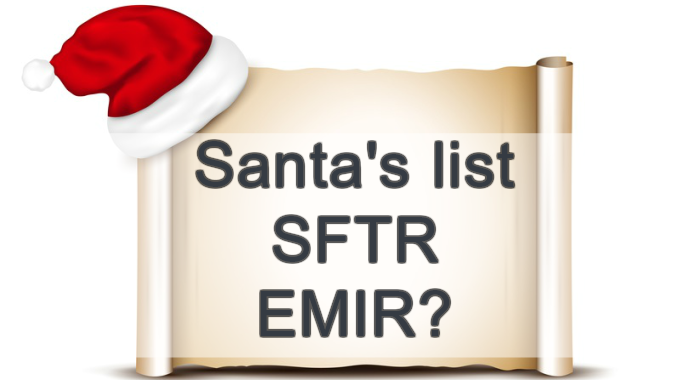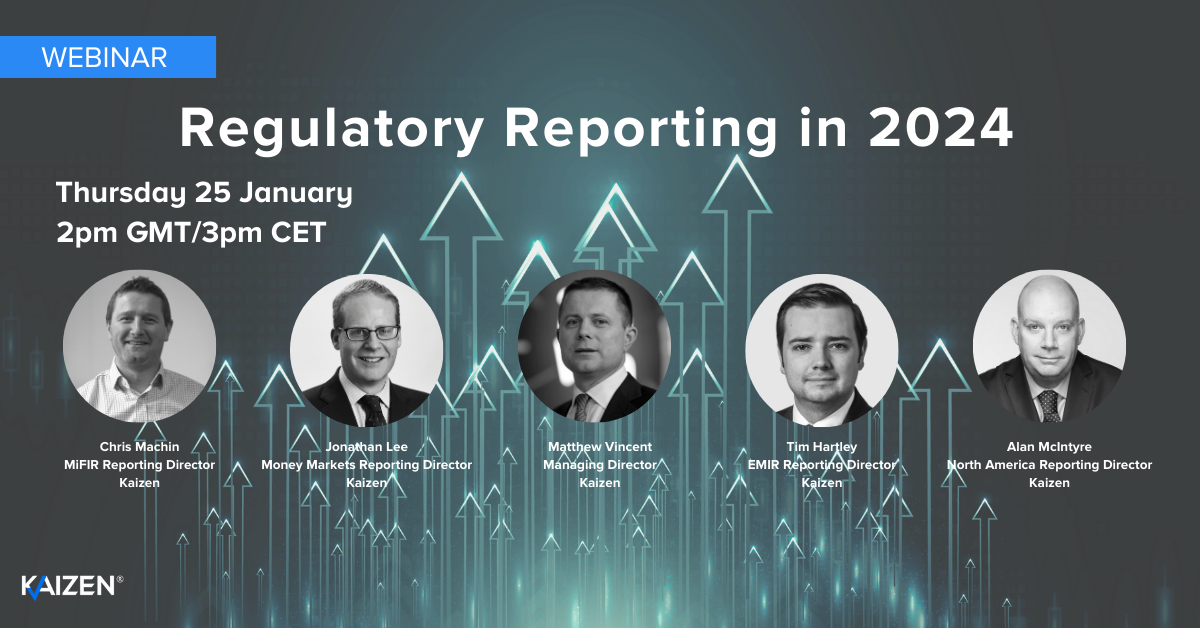Santa’s SFTR gift extends to EMIR

Santa delivered the long-awaited SFTR technical standards just in time for Christmas to delight SFTR specialists everywhere. But there also appeared to be something at the bottom of Santa’s sack for EMIR trade reporting specialists because the SFTR implementing technical standards also amended the EMIR trade reporting ITS. However, now we’ve taken the wrapping paper off this present, there doesn’t seem to be anything of value inside…
No real change
The reference to “Implementing Regulation (EU) No 1247/2012” seems curious as this is the old ITS that has already been amended by the shiny new Implementing Regulation (EU) 2017/105. Putting that aside, the changes appear meaningless. In a nutshell, the only taxonomy that can be used to classify an instrument is the CFI (as the ‘UPI’ alternative doesn’t exist and wouldn’t be a classification taxonomy if it did exist). This is not a real change as ESMA’s validation scheme already ensured only the CFI could be used – NB: the validation scheme is a really (under)handy mechanism to tweak the technical standards without having to bother with tiresome process.
Annoyingly, Annex II of the SFTR ITS replaces Annex to the EMIR trade reporting ITS (Regulation (EU) 2017/105 rather than the stated (EU) 1247/2012). This is a tricky case of spot the difference – even the amusing typos in the formats of the ‘Collateral portfolio code’ and the ‘Trade ID’ have been persisted. The only changes I could find were on ‘Product classification type’ (only ‘C’ for CFI allowed), ‘Product classification’ (has to be a CFI) and the UPI is no longer referenced as a possible ‘Underlying identification type’ or ‘underlying identification’.
SONIA
At a micro detail level, I was disappointed that SONIA wasn’t allowed to join the floating rate index club, despite being set to become a key benchmark. The publication of the ‘new’ ITS annex might have been an ideal time to add it to the list of permitted codes for floating rate indices alongside other key benchmarks such as JIBAR and BUBOR. As a paranoid Briton, I like to think of it as a slight against UK standards, but maybe we were nebulous in just not asking for it. Still, it might be a good one for firms to remember if they ever get lectured by the regulators on the importance of putting “EONA” in their floating rate fields instead of “EONIA”.
We will be providing EMIR trade reporting half-day training courses from early next year. Please contact us to register your interest and for further details.


